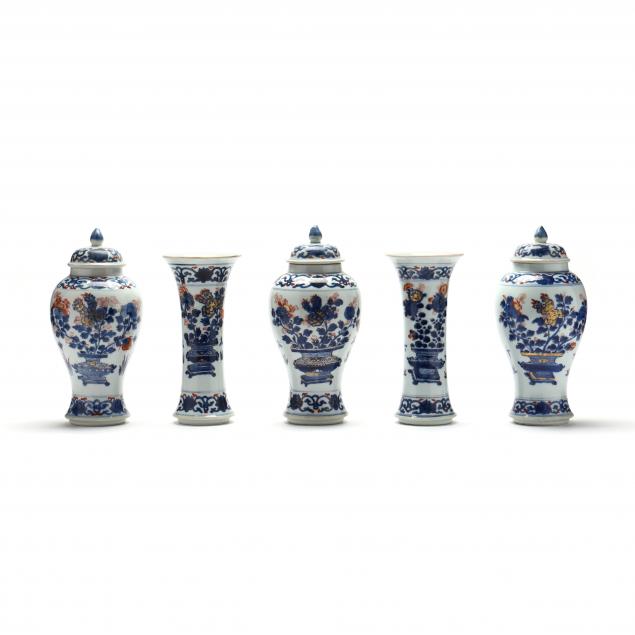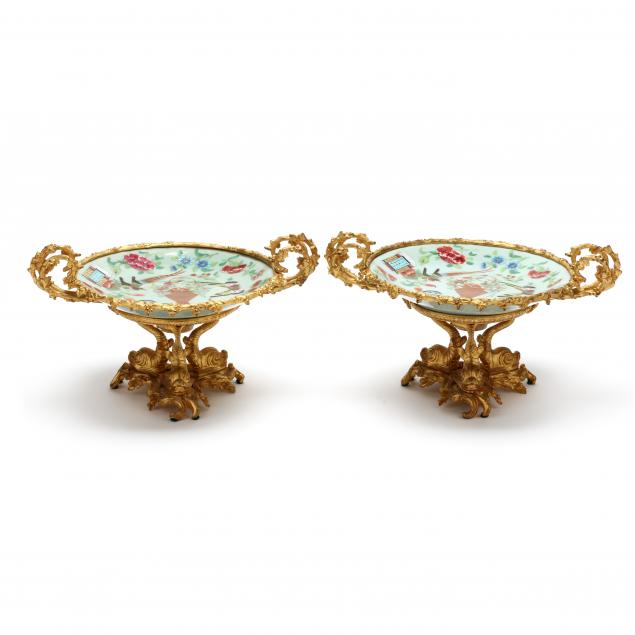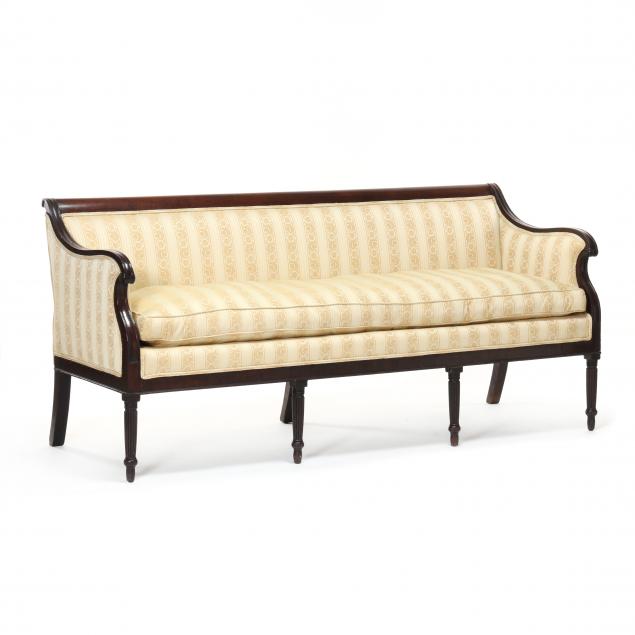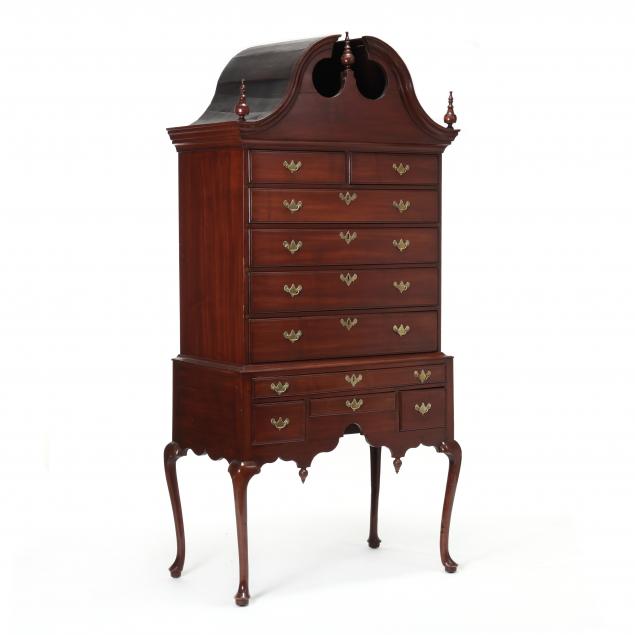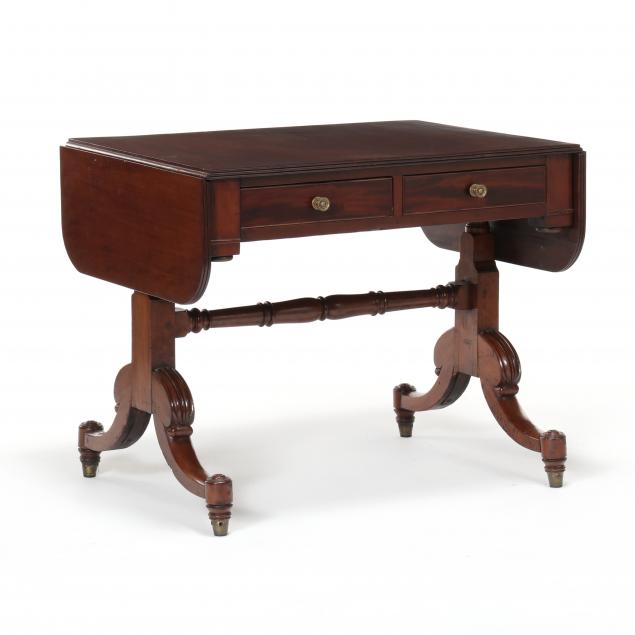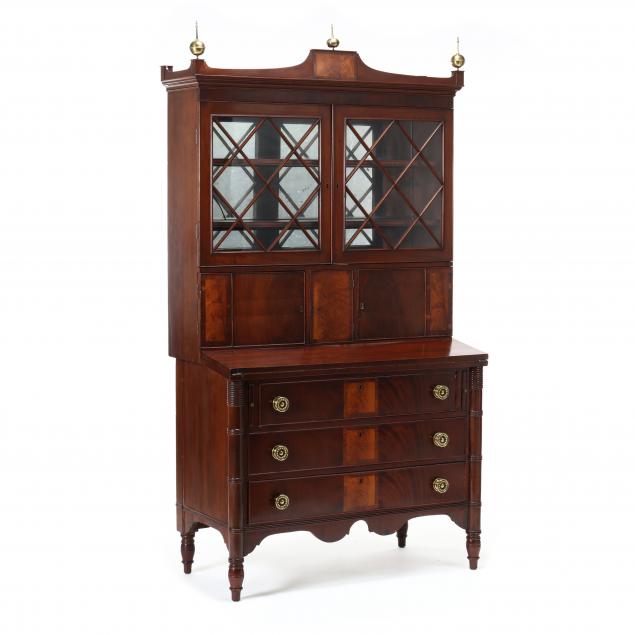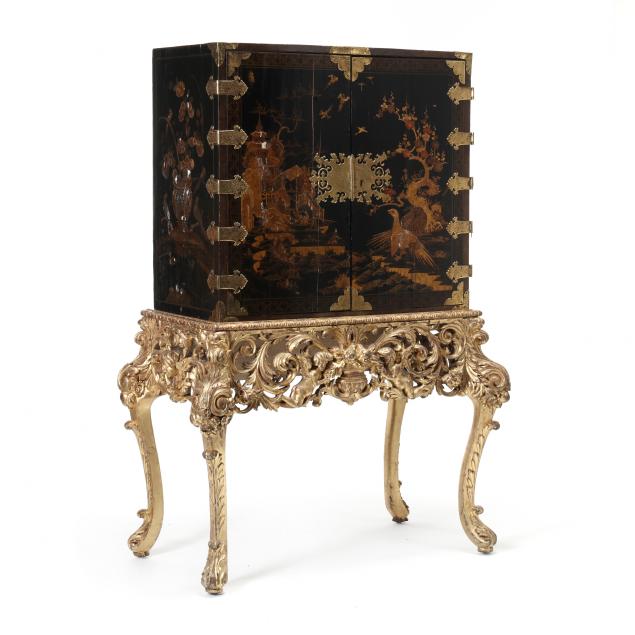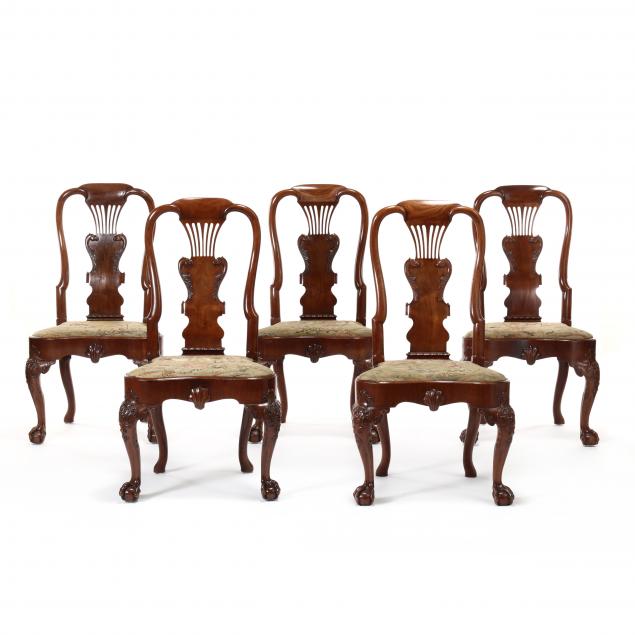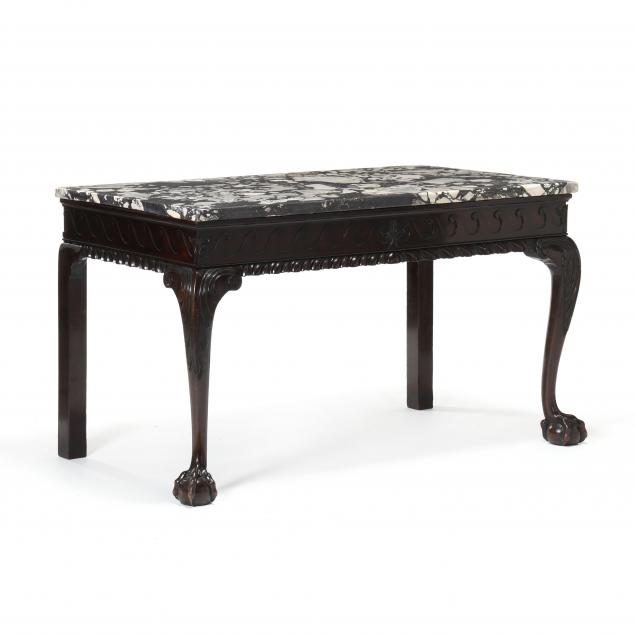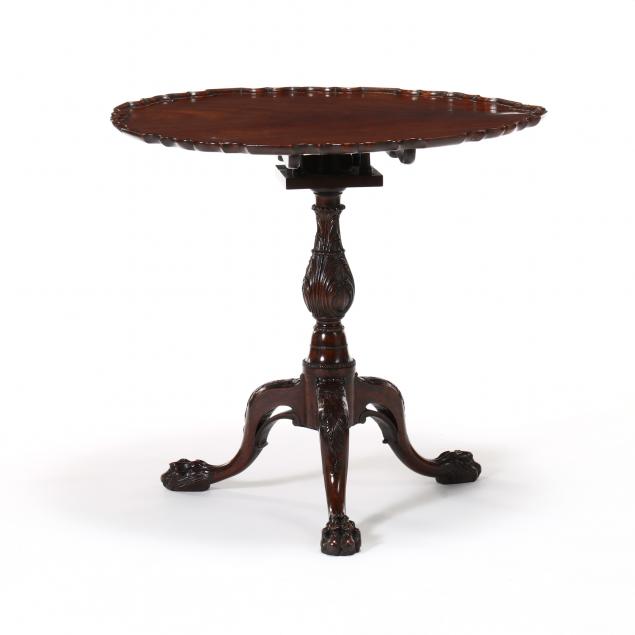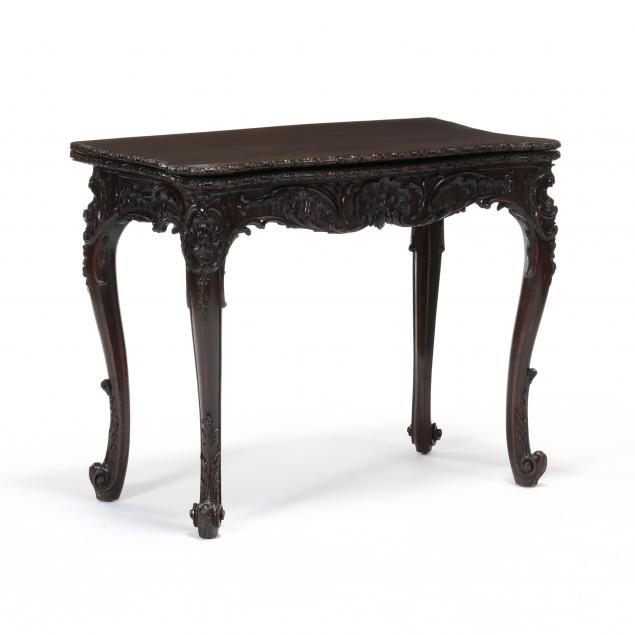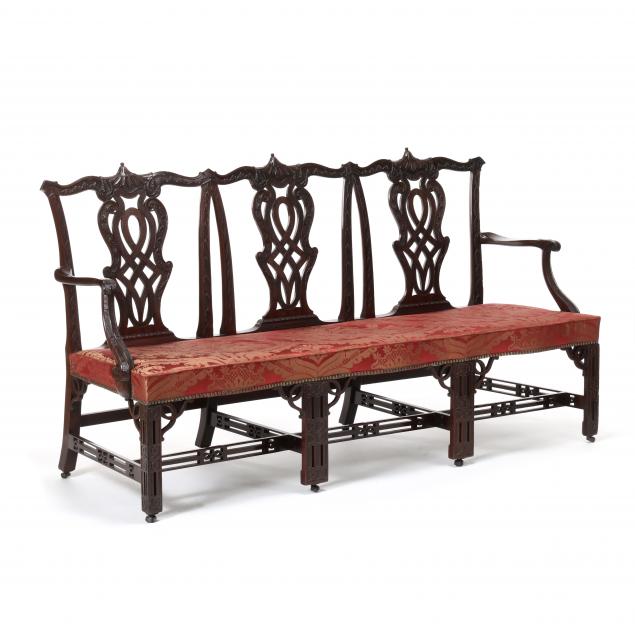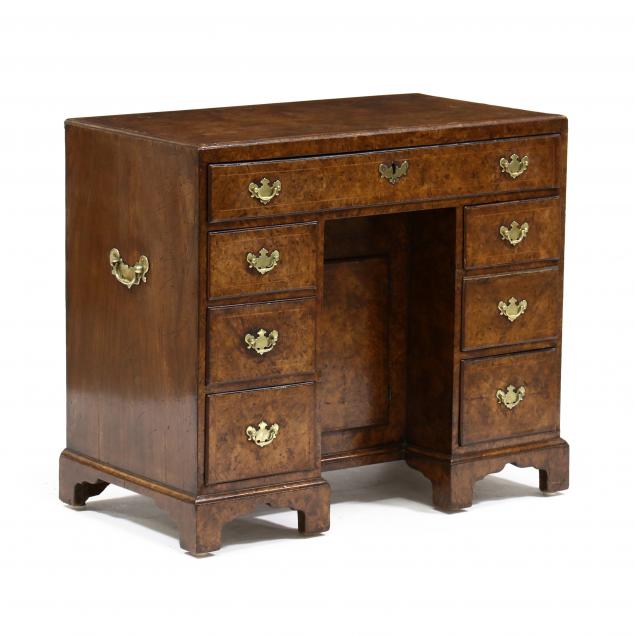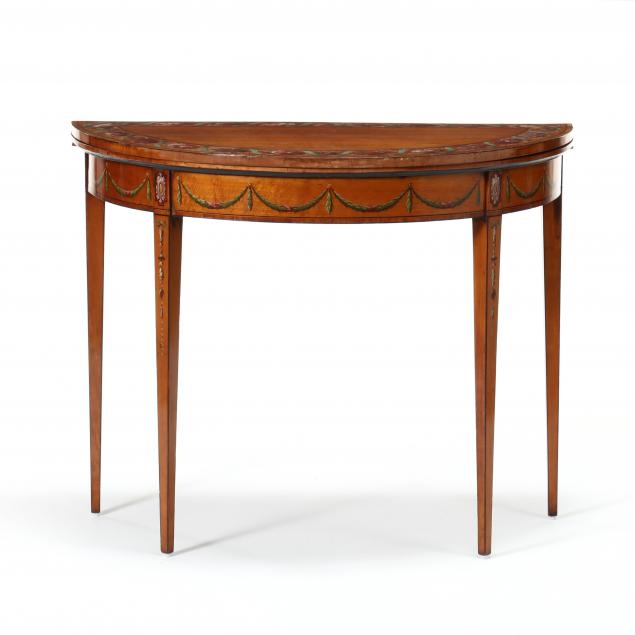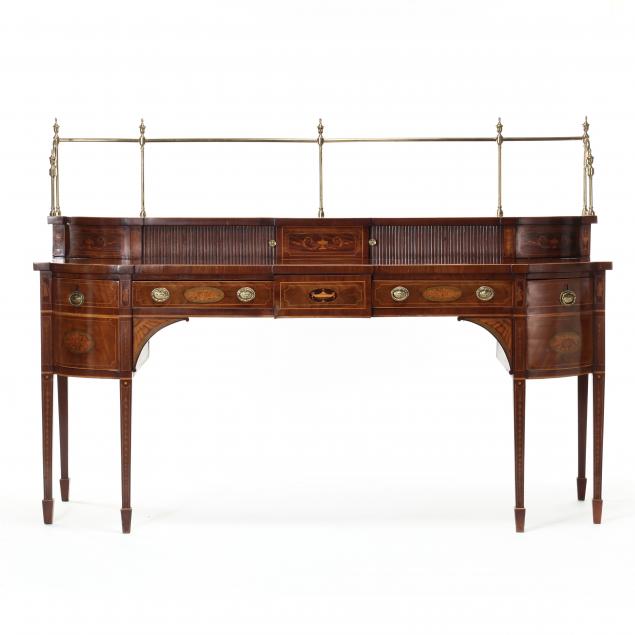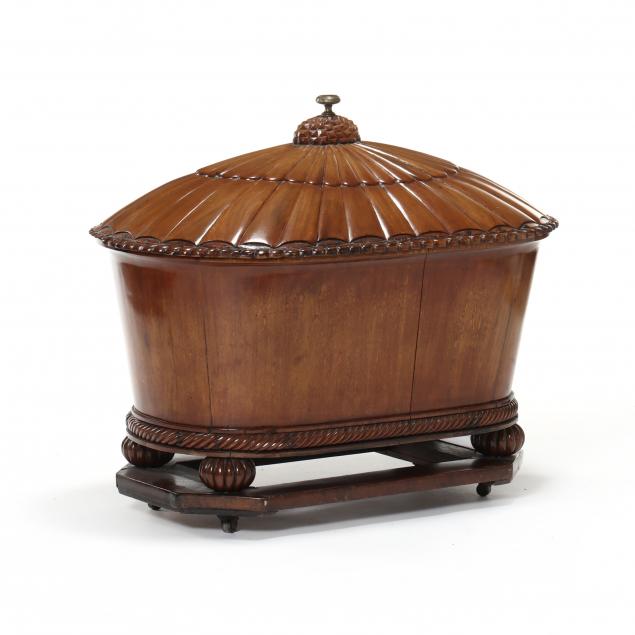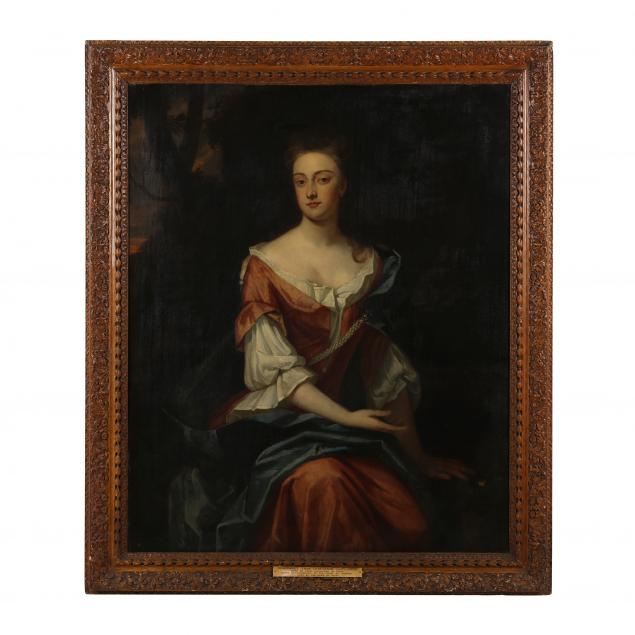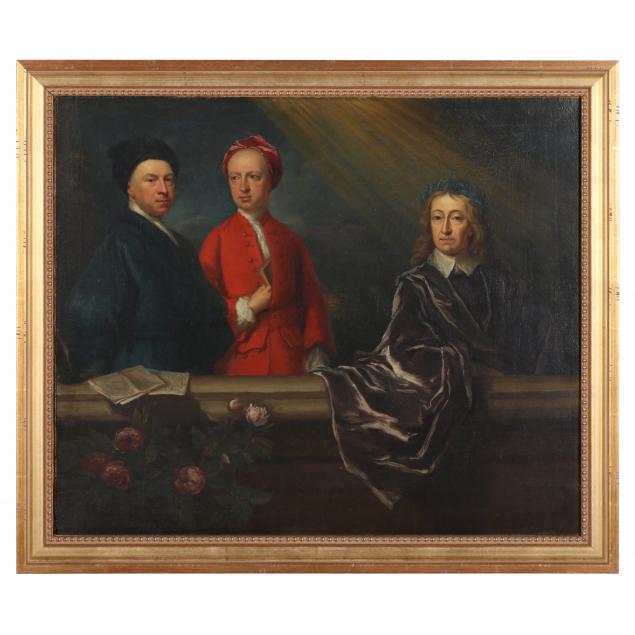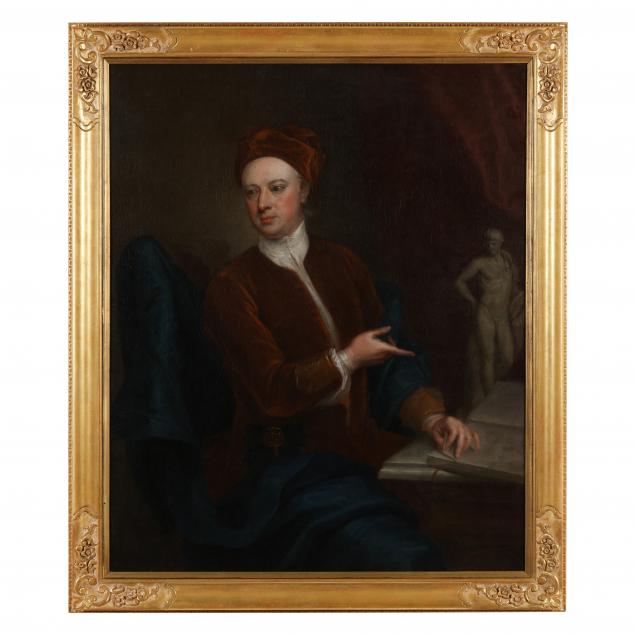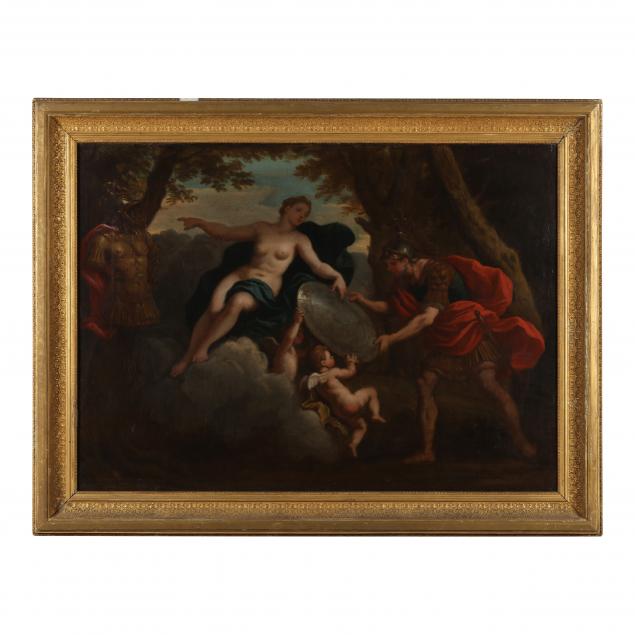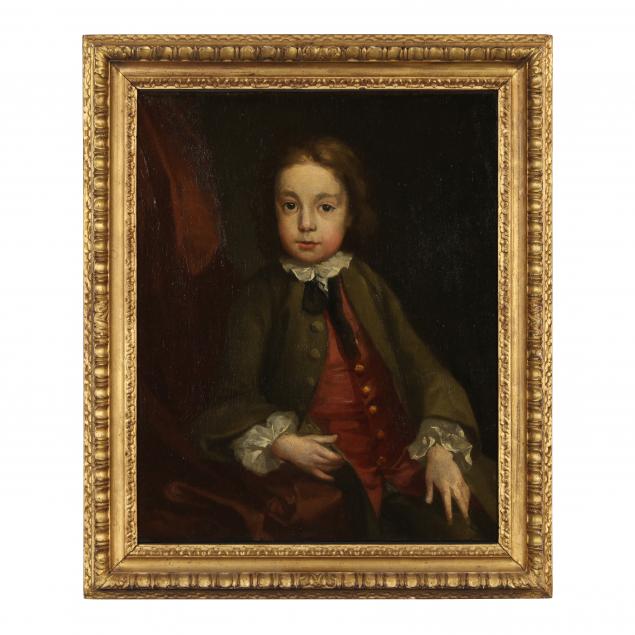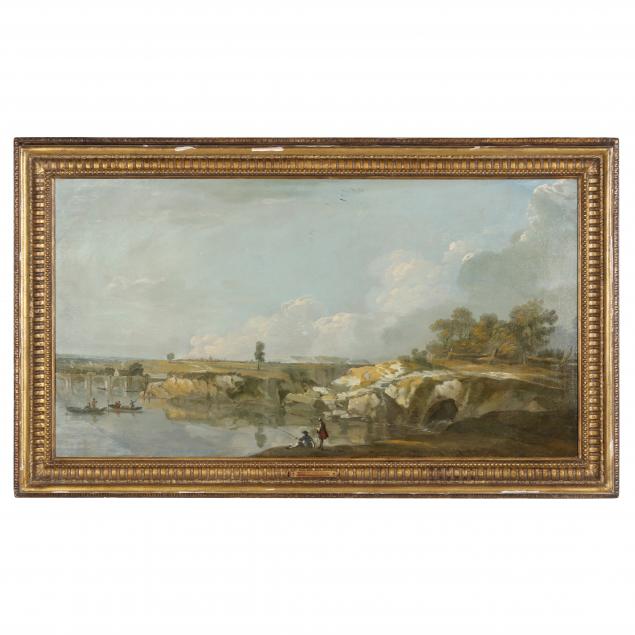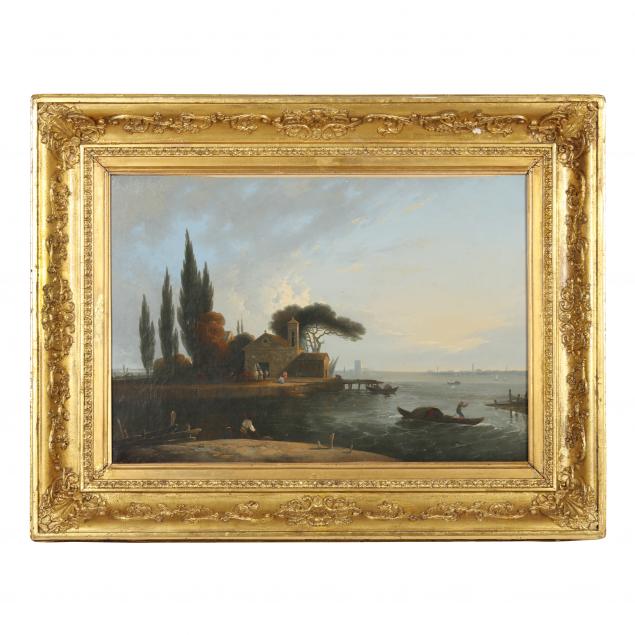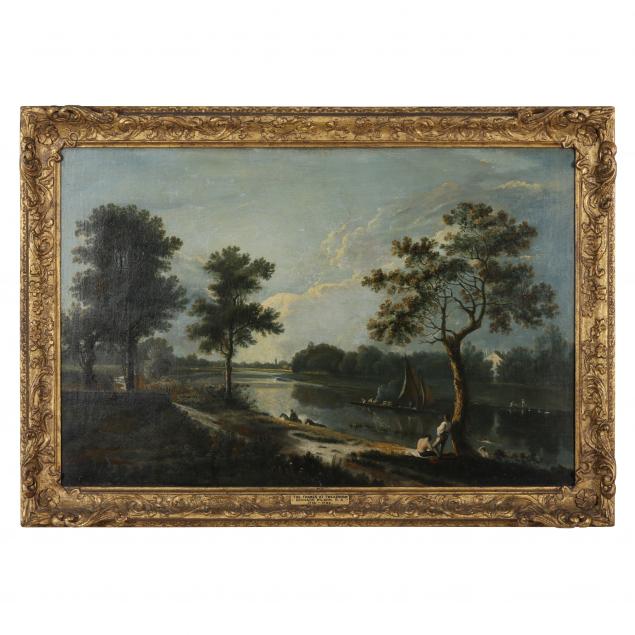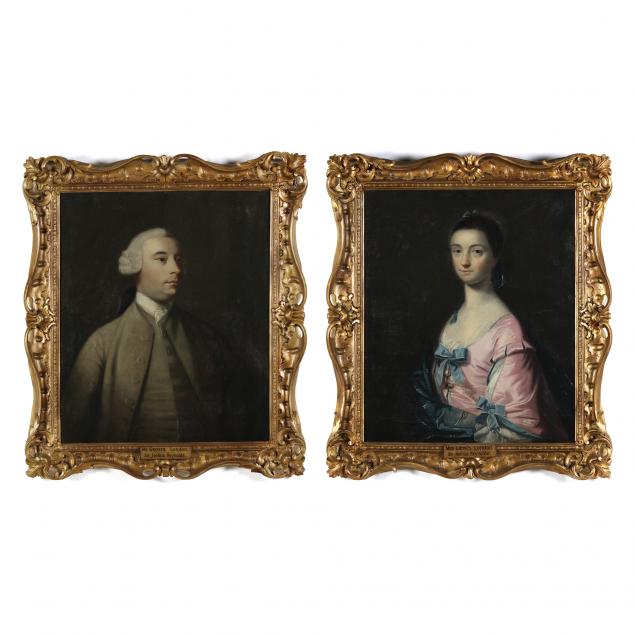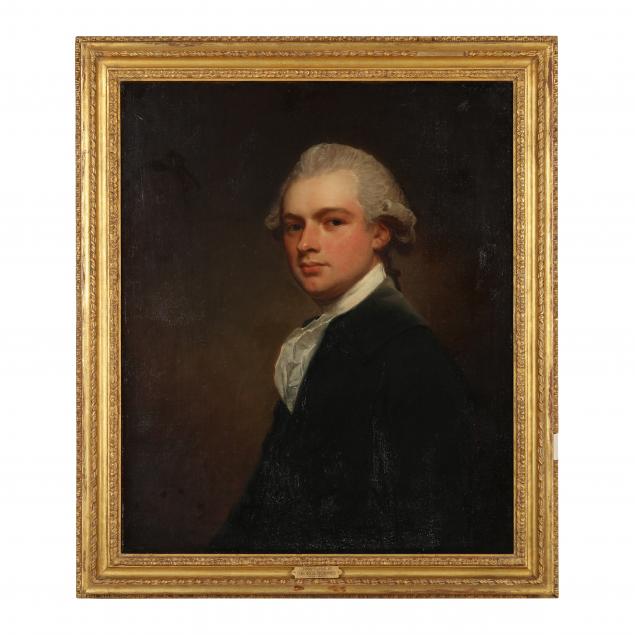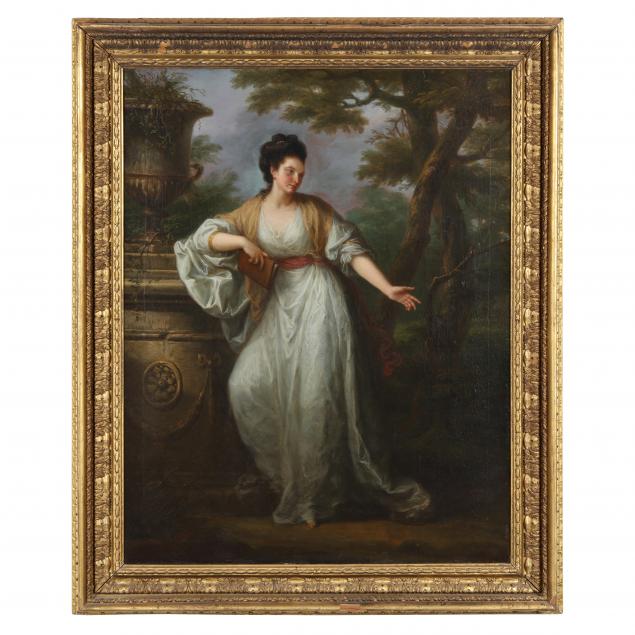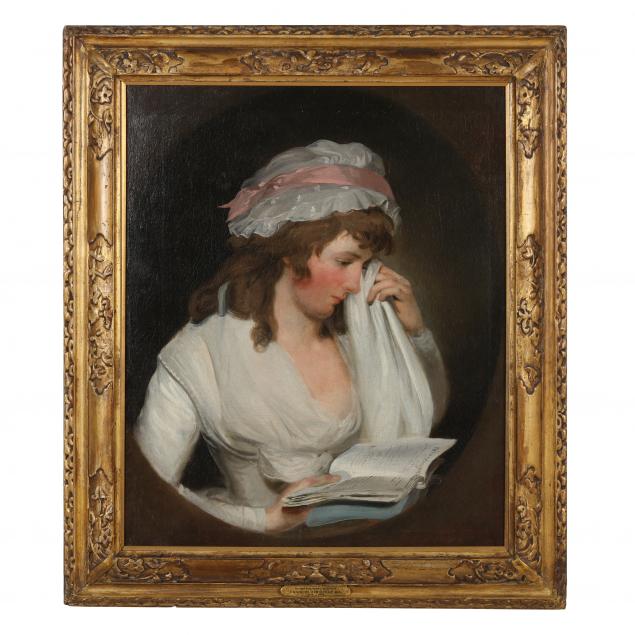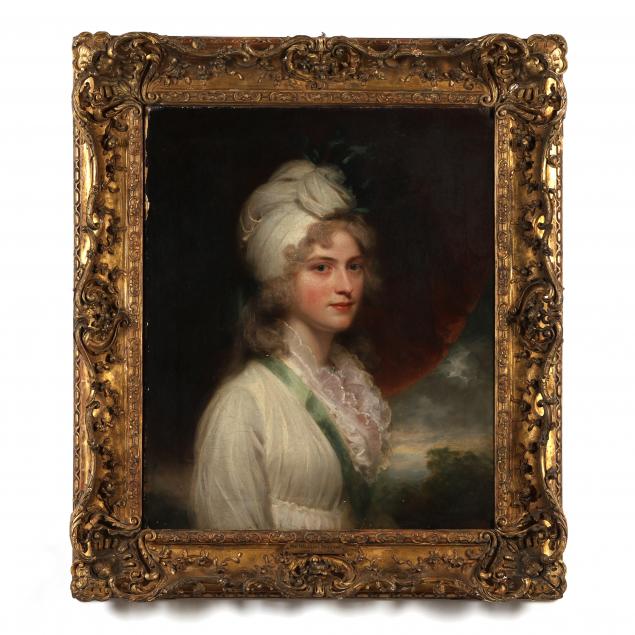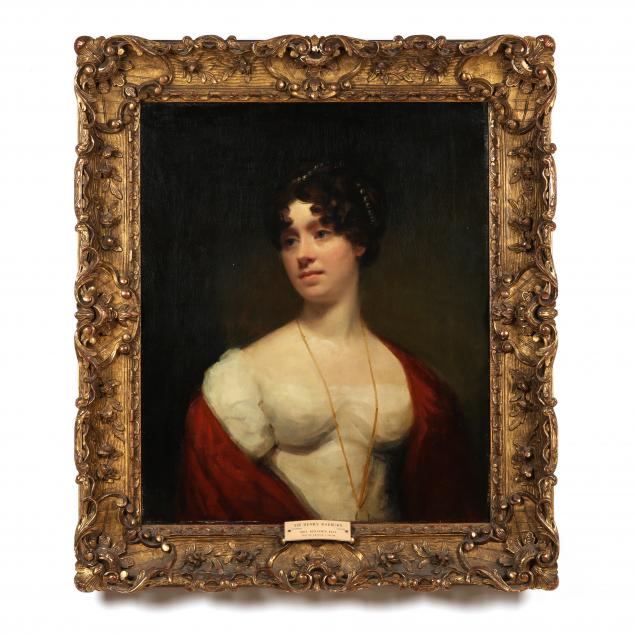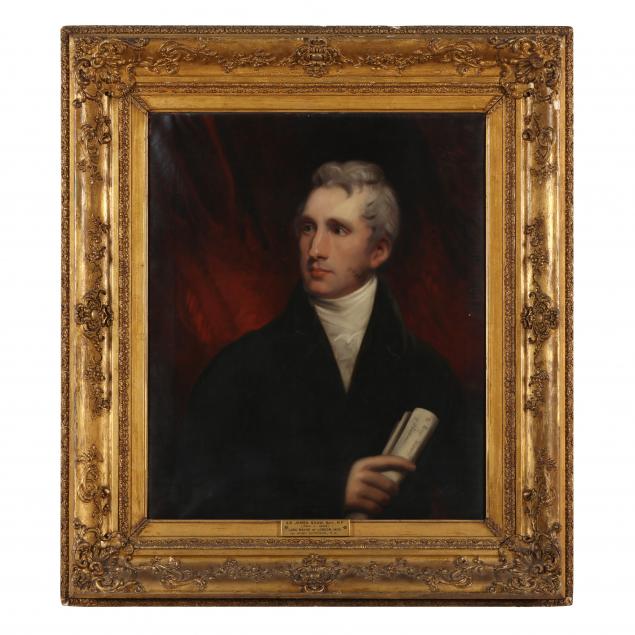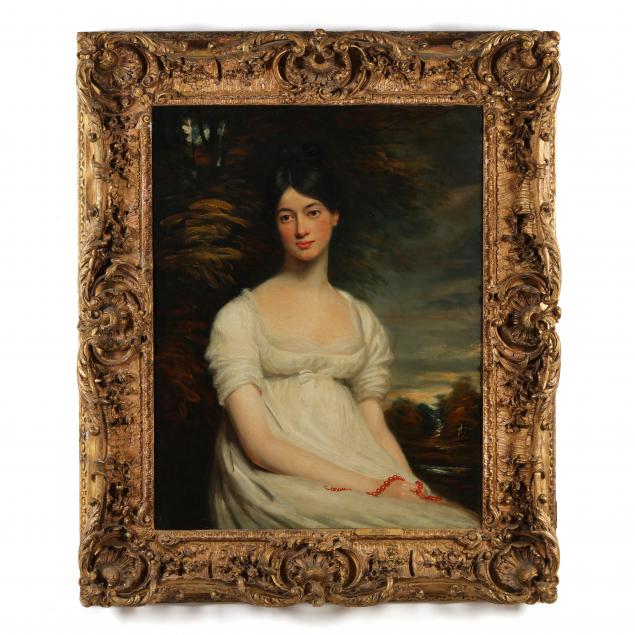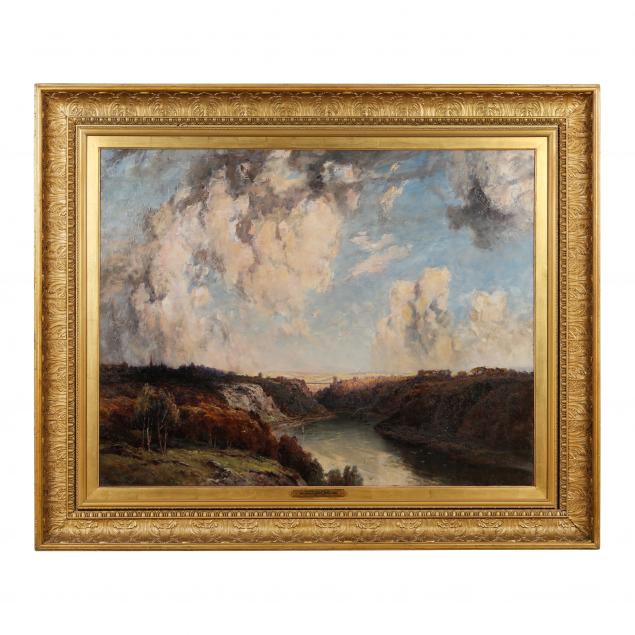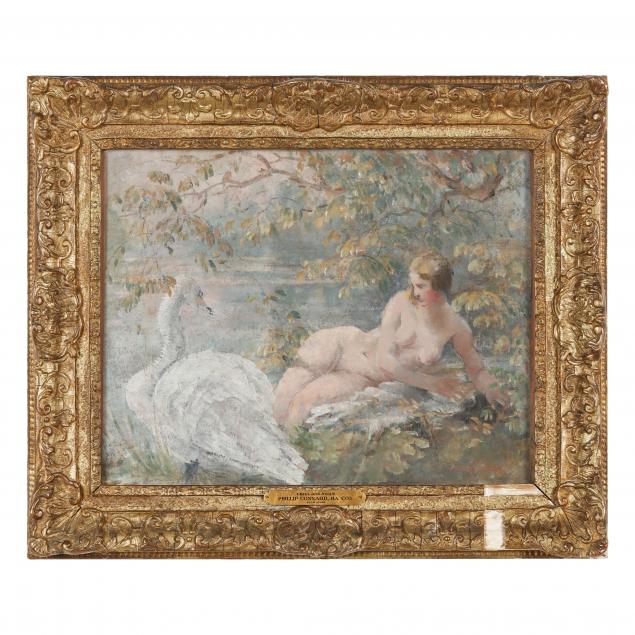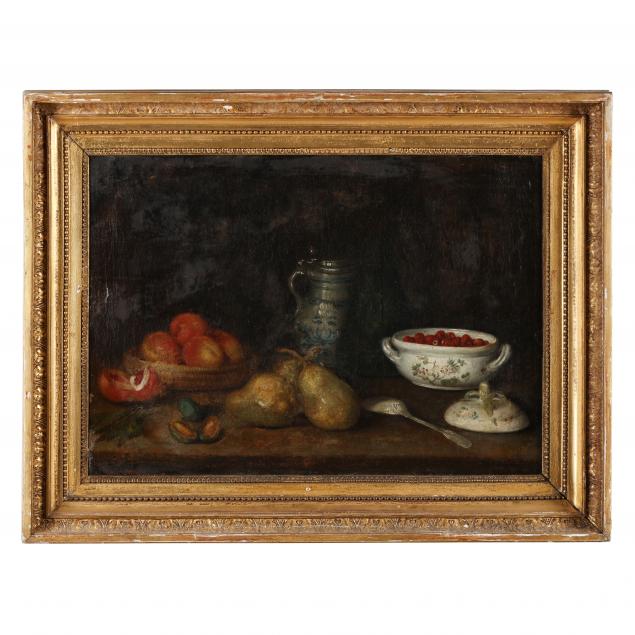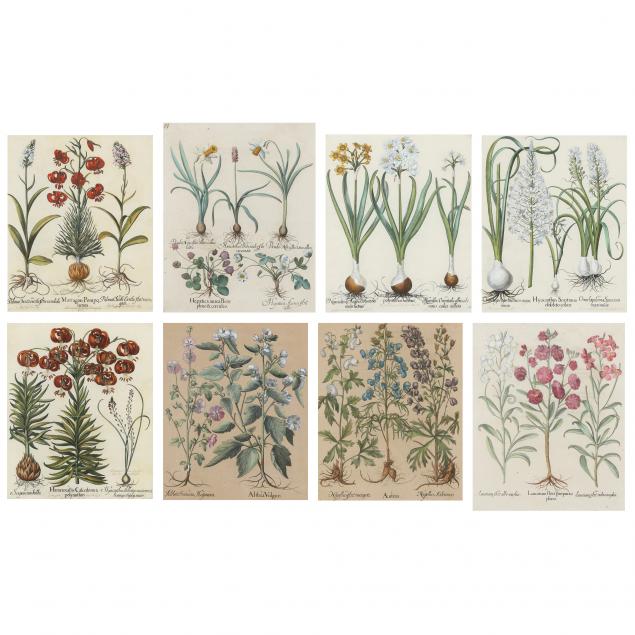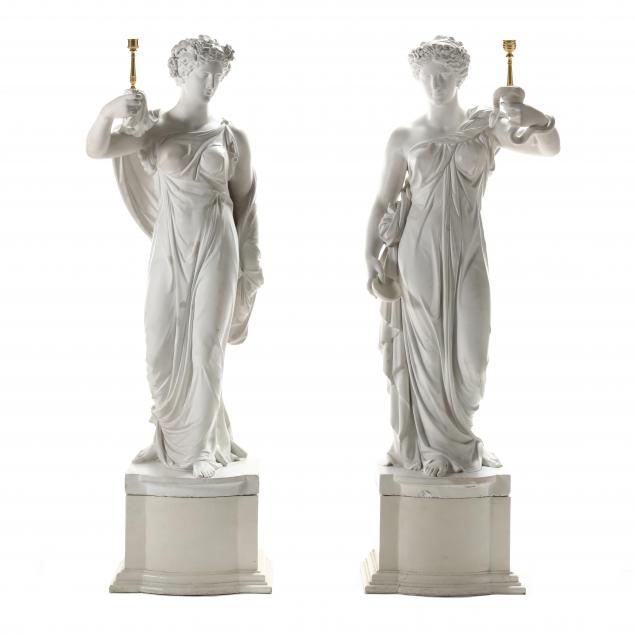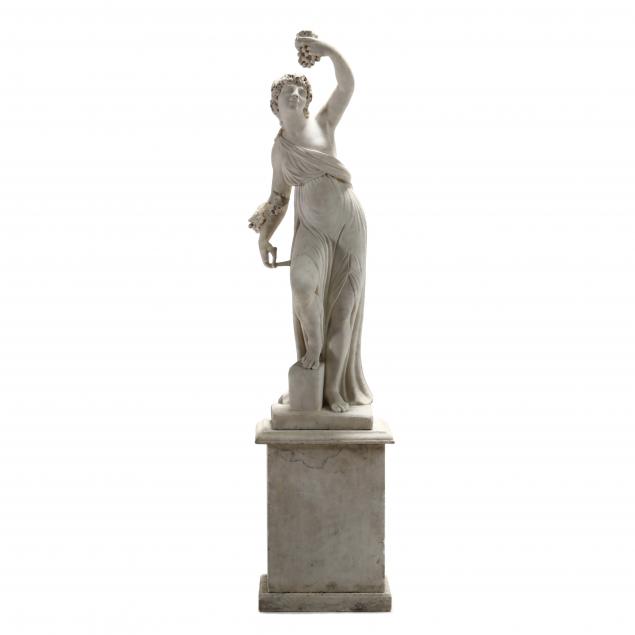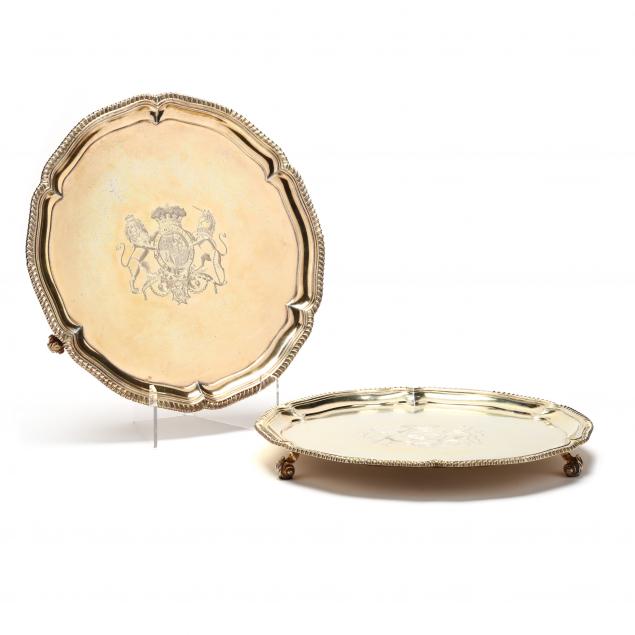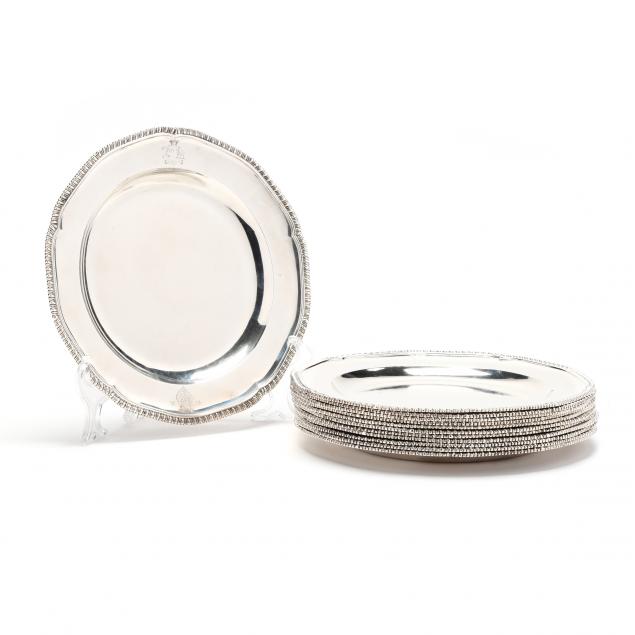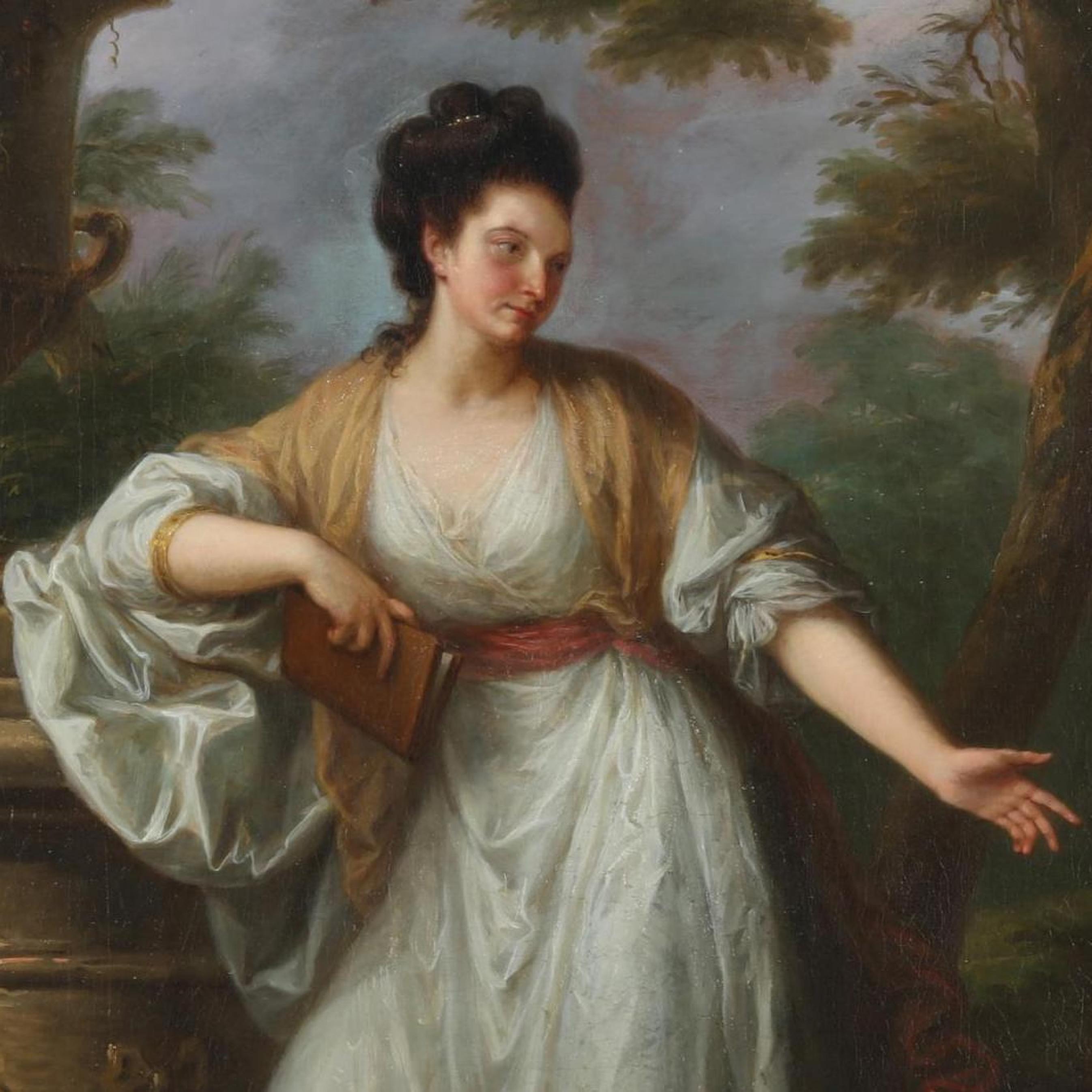
The Collector’s Eye: A Private Collection, Greensboro, North Carolina
Leland Little is proud to offer a Private Collection from Greensboro, North Carolina in our Signature Summer Auction on June 11. This collection features exemplary American and English furniture, fine art and more with storied provenances.
Leland Little, President and Director of Furniture & Estates, speaks about the significance of select pieces of furniture from the collection.
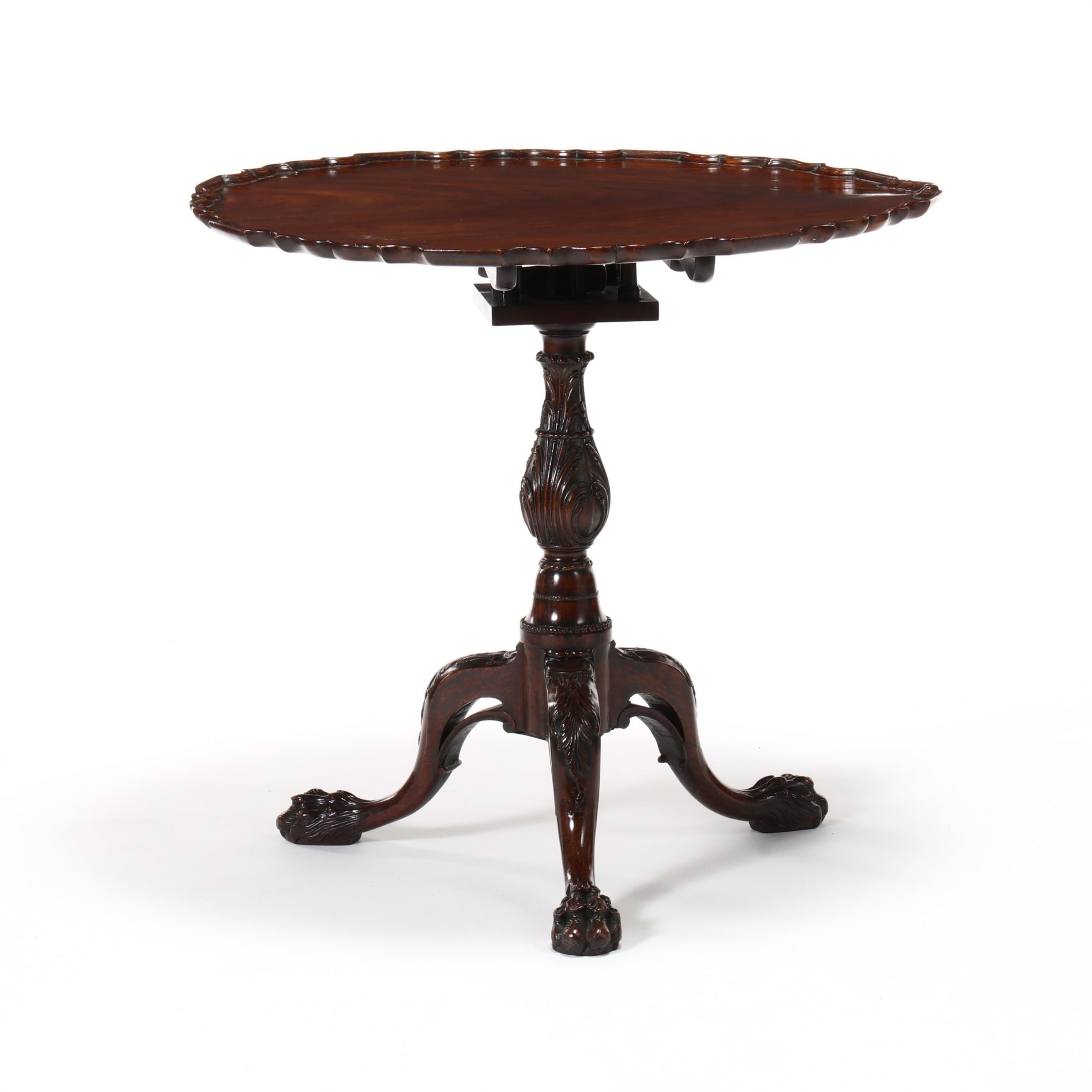
Important George II Carved Mahogany Tripod Table
This particular tripod table is important for a number of reasons. Its provenance comes from a combination of collections, including the collection of Henry P. McIlhenry out of Philadelphia as well as the collection of Benjamin F. Edwards III. This table, coming from those collections, was featured at Christie’s in both 1987 and 2010. The provenance is spectacular.
The reason for this is, quite simply, the quality of this table. This George II table features a single board mahogany leaf carved top of the finest figured mahogany, a relief carved standard and a tripod base that has a pierced under the knee carving, an open fretwork, and a robust ball and claw foot. This is a mid-18th century table to be clear, when we talk about George II.
We start with the age of the piece, mid-18th century. Next we add in the quality, which is spectacular, a work of art created by a highly qualified craftsman. Then we layer in its history and provenance. Bringing this all together makes this tripod table an important object, as classified.
We start with the age of the piece, mid-18th century. Next we add in the quality, which is spectacular, a work of art created by a highly qualified craftsman. Then we layer in its history and provenance. Bringing this all together makes this tripod table an important object, as classified.
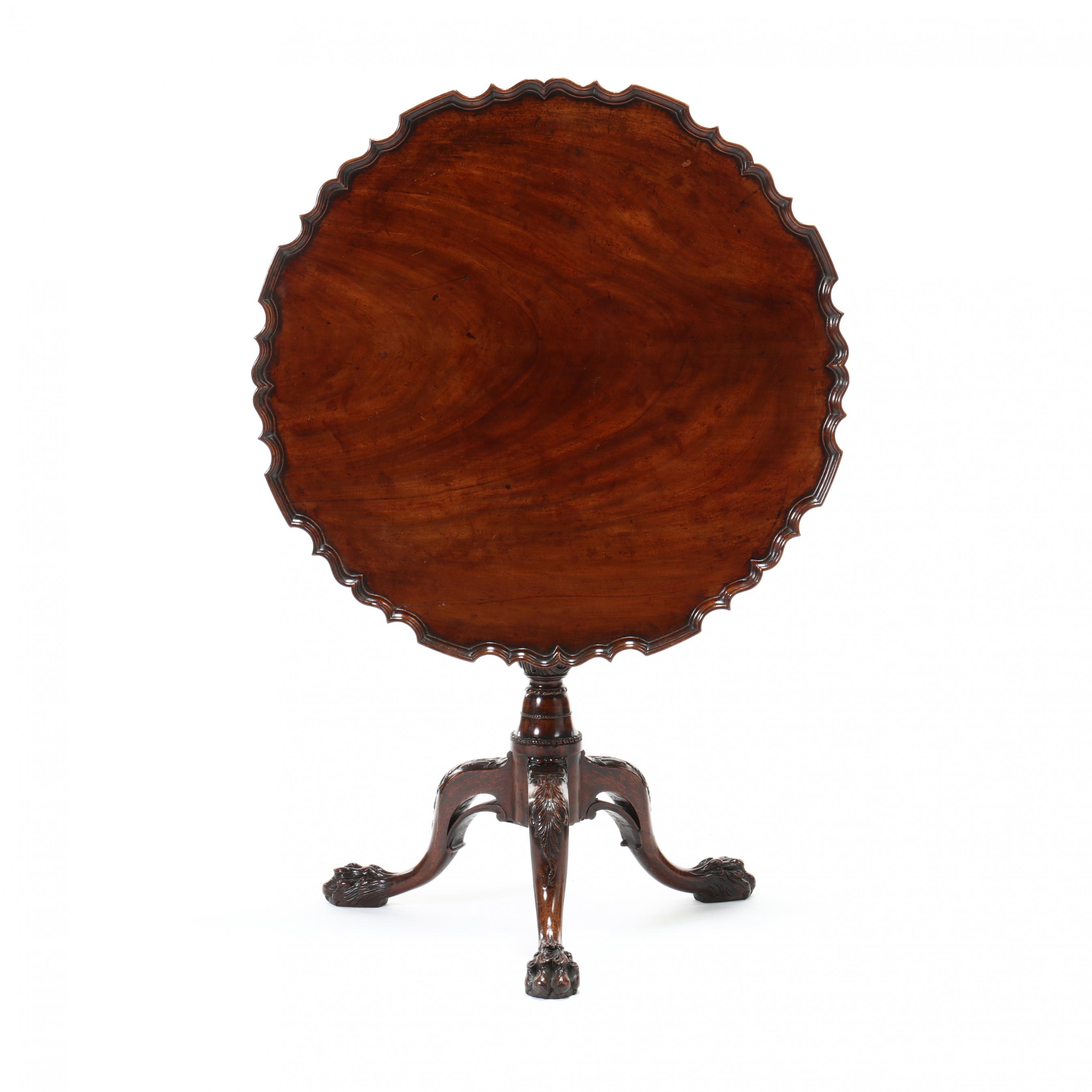
Important George II Carved Mahogany Tripod Table
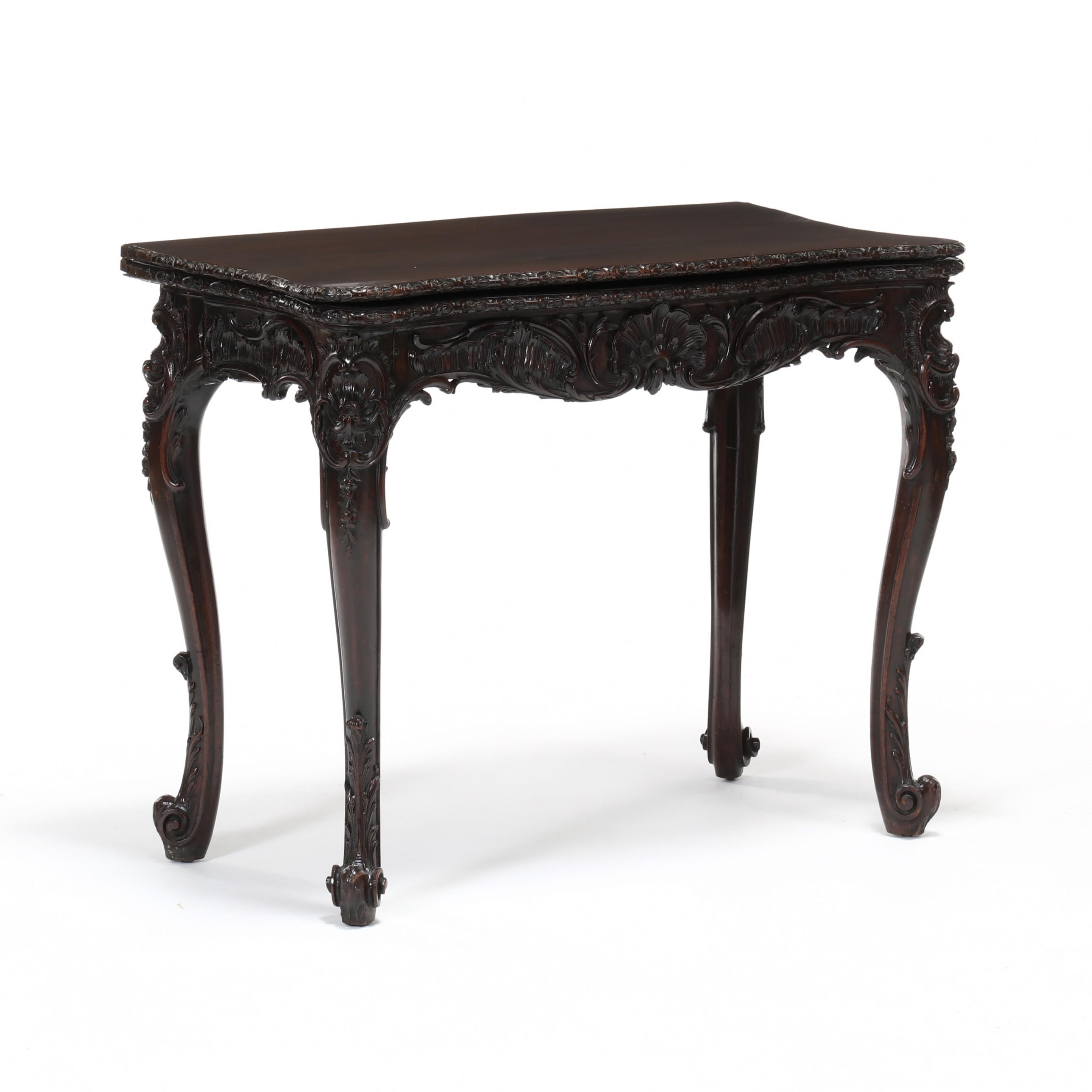
A Fine George III Carved Mahogany Concertina-Action Card Table
This is a very fine George III carved mahogany concertina-action card table. Again, this particular table has a spectacular provenance. Coming from Henry Hirsch. Esq of 23 Park Lane in London. Featured in the Christie's London sale in 1931, “The Important Collection of English Furniture Formed by Henry Hirsch, Esq.” Moving forward, all the way to Christie's in 2010, when it was featured as part of “The Collection of Benjamin F. Edwards III.” Here we have almost a 100 year provenance in terms of collections and Christie's sales. There is literature featuring this piece dating back as early as the 1920s; notably Country Life in 1924, featuring Mr. Henry Hirsh’s furniture.
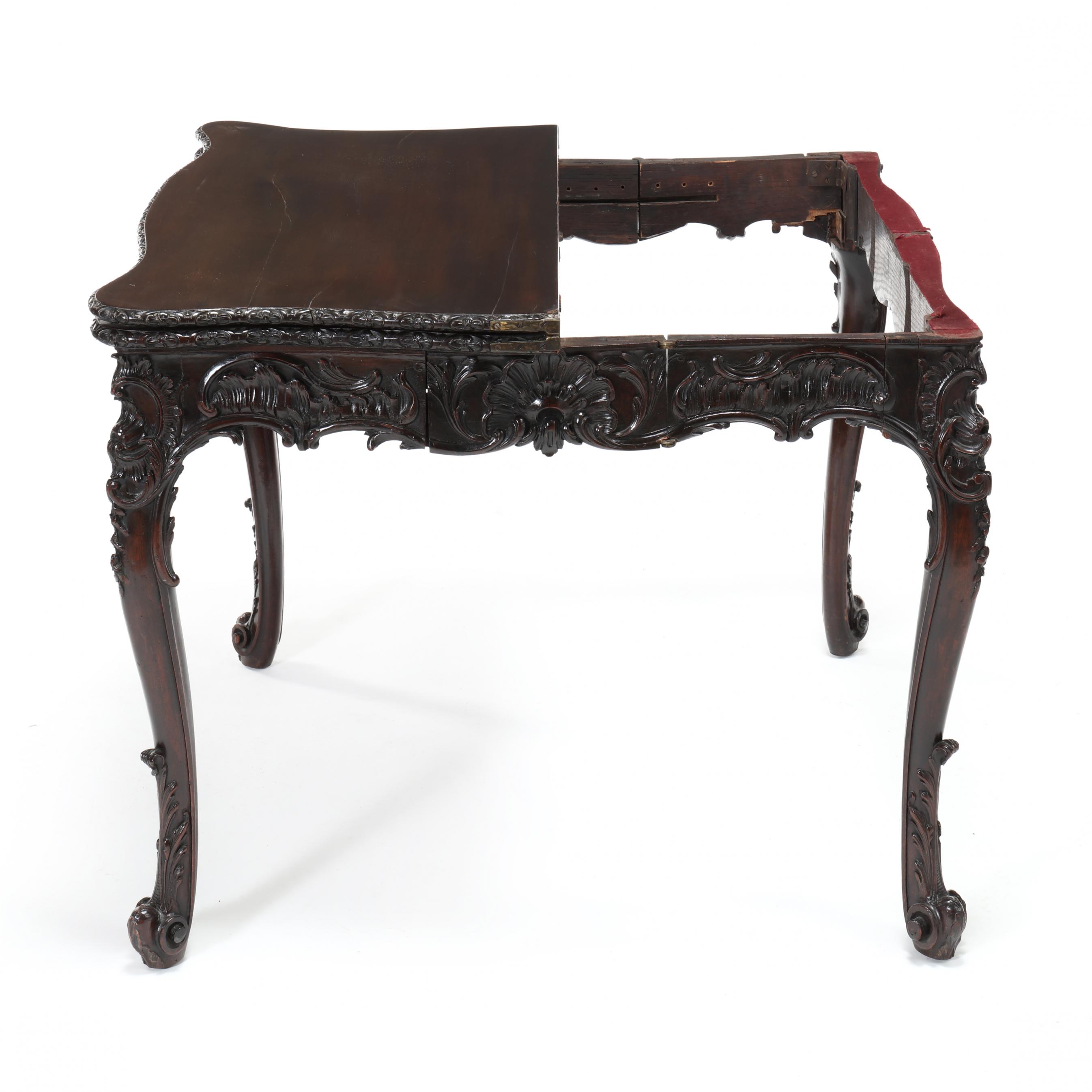
A Fine George III Carved Mahogany Concertina-Action Card Table
Coming back to the object itself, a 1760 era table that was created by a highly accomplished craftsman who was at the peak of his career. It features choice mahogany, elaborately carved detail in the form of a rococo shell, which is straight from the ‘French’ designs published in Thomas Chippendale's landmark book, The Gentleman and the Cabinet-maker’s Director. Usually, for this type of table, you would see a gate leg, meaning when the rear leg opens, it swings. In this instance with the concertina-action, the legs pull out like an accordion, creating a square table.
Combining that unique function with the elaborate carving out of Thomas Chippendale’s book creates a rare and significant work of art. One can understand why this table has been written up in literature, by Henry Hirsch, and by Christie’s as one of the finest examples of this form from the mid-18th century London craftsmakers.
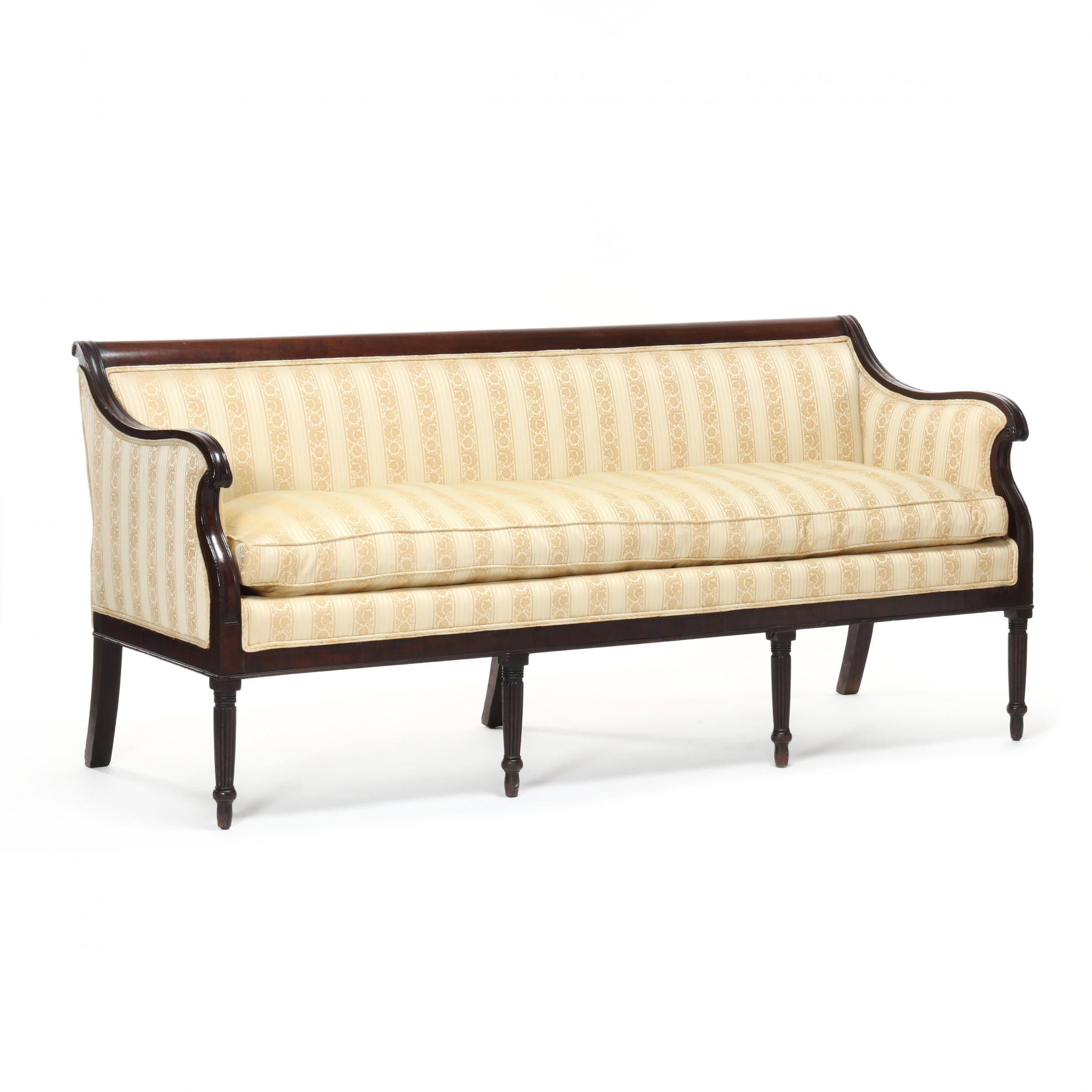
Philadelphia Federal Carved Mahogany Sofa
Let’s bring it back to America, to a Philadelphia Federal carved mahogany sofa. This piece was created in a Philadelphia shop in the early 19th century, around 1810. Following many of the French and English cabinet shops, Philadelphian craftsmen used mahogany and mahogany veneer, which was the prominent wood choice of this period. What we have here is a very formal, yet refined sofa that features a horizontal scrolled crest rail, and a distinctive molded downswept rolled arm with applied rosettes at the terminus. Some of the iconic features we see in all Federal furniture are ring turned and reeded tapered legs with the downswept rear legs. This particular look is distinctive of many pieces of Federal furniture, as it is with this sofa.
This piece has a very proud provenance, coming from the contents of Craig and Tarlton Inc., an antiques shop out of Raleigh, North Carolina. Jim Craig and Sam Tarlton had a shop dating from 1969 through 1985 at which time Christie's came to Raleigh, North Carolina and did a landmark onsite auction that is still talked about to this day. This particular sofa was part of that collection and was sold at the Christie's auction in 1985. For regional collections and collectors of Philadelphia School Work, this is a very fine example which is accompanied by great provenance.
This piece has a very proud provenance, coming from the contents of Craig and Tarlton Inc., an antiques shop out of Raleigh, North Carolina. Jim Craig and Sam Tarlton had a shop dating from 1969 through 1985 at which time Christie's came to Raleigh, North Carolina and did a landmark onsite auction that is still talked about to this day. This particular sofa was part of that collection and was sold at the Christie's auction in 1985. For regional collections and collectors of Philadelphia School Work, this is a very fine example which is accompanied by great provenance.
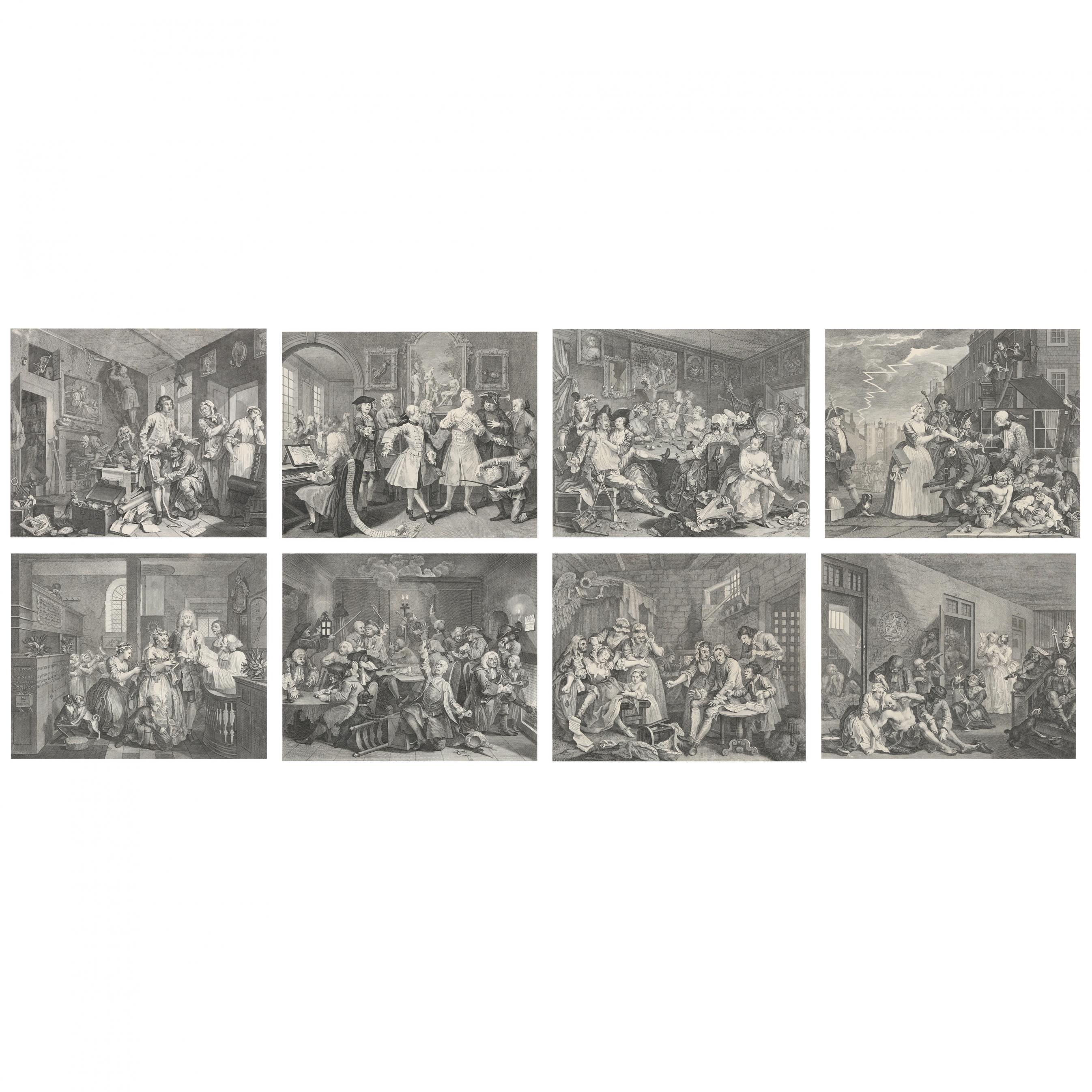
William Hogarth (English, 1697-1764), A Rake's Progress (Complete Suite of 8)
Lauren Sanford, Director of Prints & Multiples at Leland Little, highlights a grouping of William Hogarth prints and touches on their connection to the larger collection.
We have three complete sets of series by William Hogarth, an 18th century artist who was known for satire. All three are exemplary of his work. The artist’s name alone elicits a reaction – when art historians hear Hogarth it’s, “Oh my gosh! You have a Hogarth print?” Even lesser known works than these are fabulous prints to own. He is one of those 18th century English painters that resonates with everybody. His work excites people. And not only do we have these exemplary prints, but we also have a painting by him - which is incredible.
We have three complete sets of series by William Hogarth, an 18th century artist who was known for satire. All three are exemplary of his work. The artist’s name alone elicits a reaction – when art historians hear Hogarth it’s, “Oh my gosh! You have a Hogarth print?” Even lesser known works than these are fabulous prints to own. He is one of those 18th century English painters that resonates with everybody. His work excites people. And not only do we have these exemplary prints, but we also have a painting by him - which is incredible.
Hogarth was one of the key players in 18th century English art, with ties to the Rococo period. Out of our three series, his best known is A Rake’s Progress. Everything Hogarth did was about morality, he did some portraiture - and the painting we have of his is a portrait - but A Rake’s Progress represents what he was really about. He was very much a steadfast middle class artist and he was proud of that, he stood by it and that is what he wanted to talk about with his art. He thought that aristocracy was the downfall of England. In these series, we see him making commentary on what was wrong with England. A Rake’s Progress chronicles John Rakewell, who was a man who inherited a bunch of money from his dad and he spent it on frivolous stuff, prostitution, gambling and eventually ends up in a mental institution.
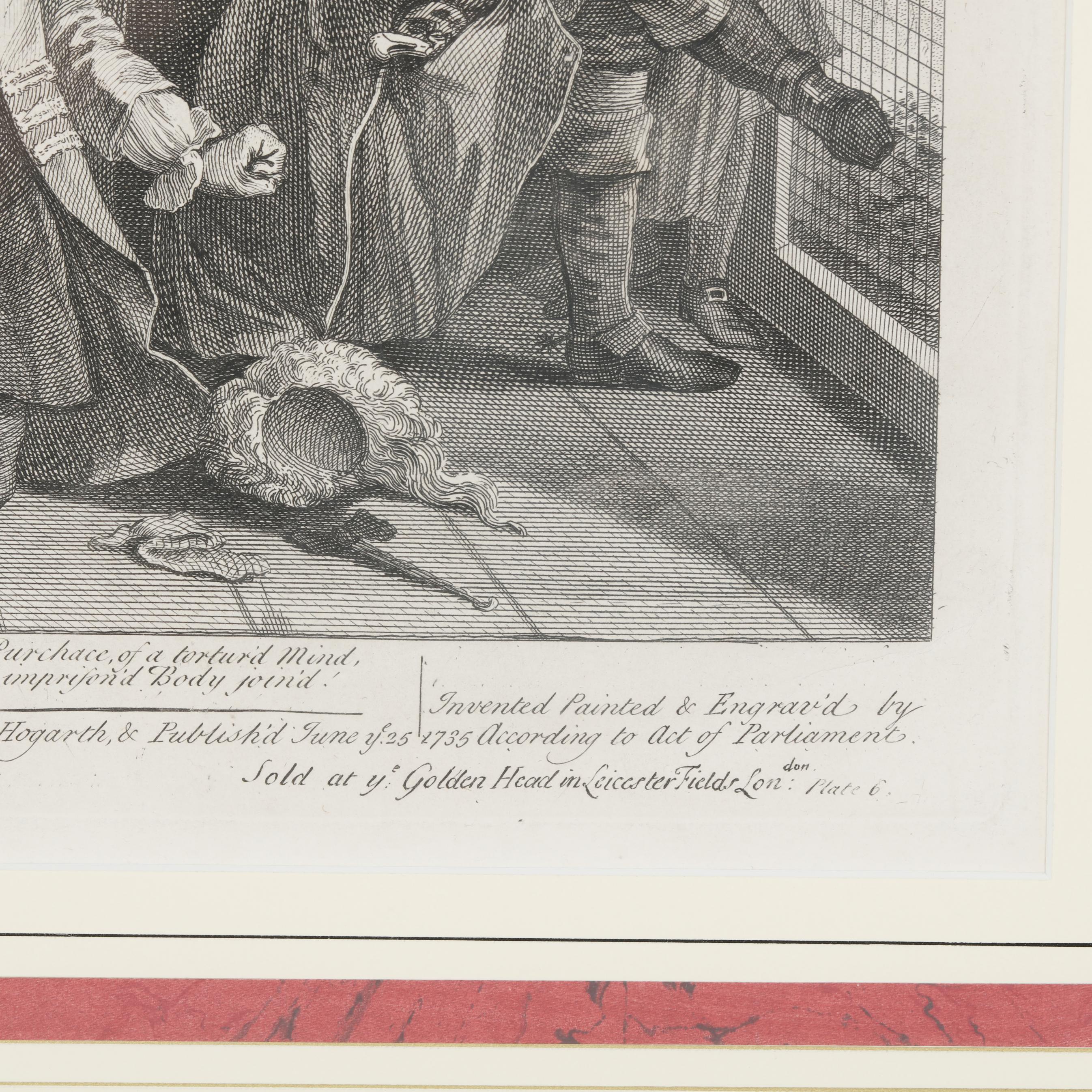
Not only are these prints notable because they were printed during Hogarth’s lifetime, but they are also appealing in the historical sense of how they fit into this collection as a whole. Hogarth tried at one point to be a grand historical painter and he wasn’t very successful. These satirical scenes are what he became known for and because of that he represents a great juxtaposition to Sir Joshua Reynolds (his Portraits of Mr. and Mrs. Sylvanus Groves are on offer from the same collection) who was the head of the Royal Academy. Reynolds was ‘Mr. Aristocratic,’ he painted people in the best light with soft backgrounds whereas Hogarth is showing iconography in his backgrounds foreshadowing bad things to come. Reynolds did not want to see the common people Hogarth represented - he wanted to elevate his figures. It is fascinating to note that during their lifetimes, these two men did not like each other; so the fact that they ended up so close to one another in the same collection is truly remarkable.
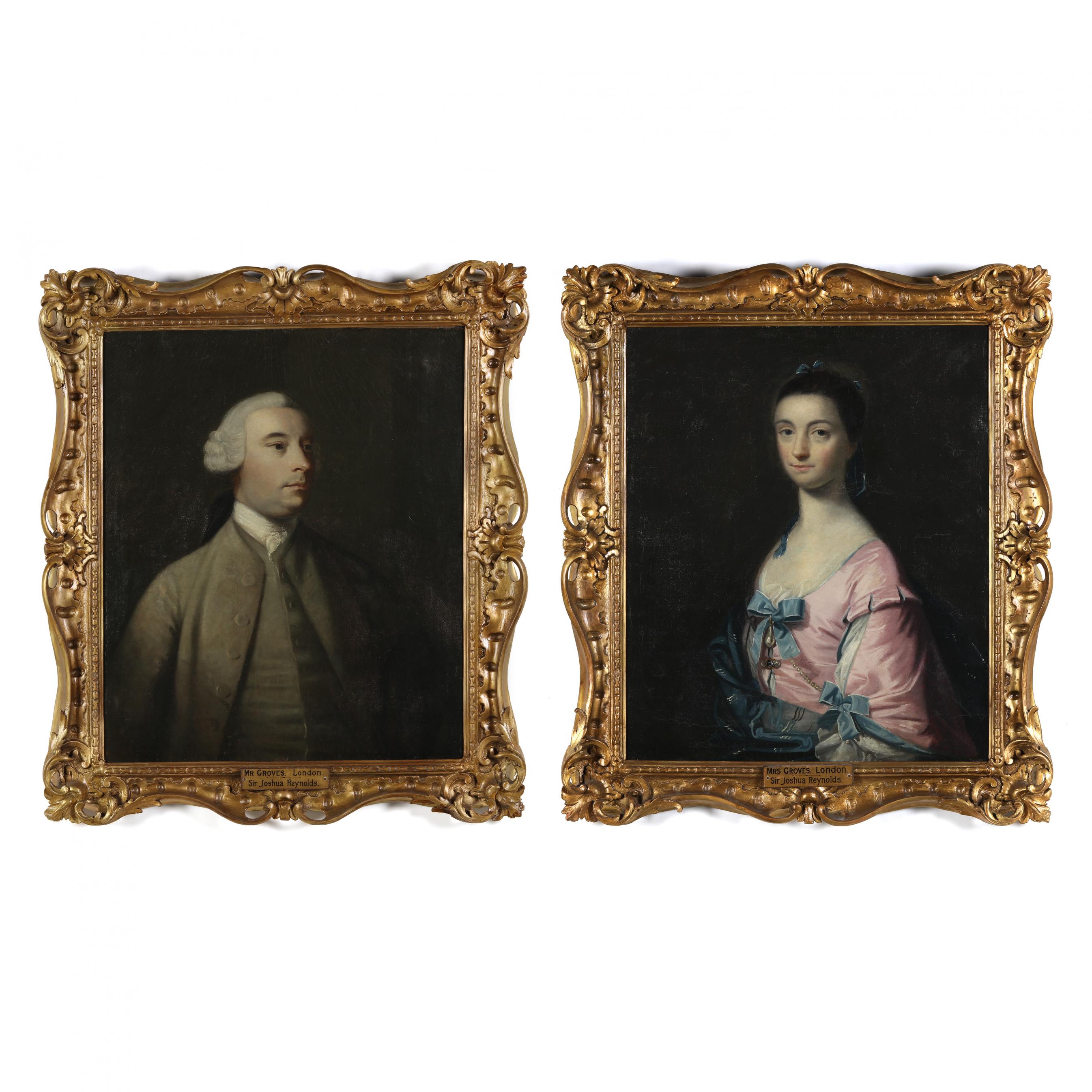
Sir Joshua Reynolds, P.R.A. (1723-1792), Portrait of Mr. and Mrs. Sylvanus Groves
Claire Fraser, Director of Fine Art at Leland Little, weighs in on the intersectionality of artists represented in this thoughtful collection.
Sir Joshua Reynolds was the first President of the Royal Academy and Angelica Kaufmann was one of two women in the founding members of the Royal Academy. Reynolds and Kaufmann were great friends and were both the top portrait artists of their day. She did more female portraits, becoming well known for her female patronage and it was because these educated, wealthy women wanted another educated and talented woman to depict them. Kaufmann excelled at that.
Sir Joshua Reynolds was the first President of the Royal Academy and Angelica Kaufmann was one of two women in the founding members of the Royal Academy. Reynolds and Kaufmann were great friends and were both the top portrait artists of their day. She did more female portraits, becoming well known for her female patronage and it was because these educated, wealthy women wanted another educated and talented woman to depict them. Kaufmann excelled at that.

Angelica Kauffman, R.A. (1741-1807), Portrait of Mary Pocklington of Winthorpe Hall
The portrait we have of Mary Pocklington is the quintessential grand manner portrait that you would expect and hope for from Kaufmann. The subject is looking back in a classical stance that Kaufmann would have studied when she was in Italy. She shows Mary holding a book, representing that she is educated and well-read. She is leaning up against a classical urn, referencing back to classical antiquity as well as the great landscapes of the past in the background.
These private collectors were passionate about their collections and very intentional about what they were buying. One particular thing that I found enjoyable while cataloging these paintings is that all of these artists are interconnected in some way. Kaufmann knew Reynolds, you have Sir William Beechey who was in the Royal Academy, John Opie would have known Reynolds. It shows a very succinct period of time in British art – 1740 to the early 19th century, it’s a very focused collection.
I loved listening to the stories the collector would share when we were first viewing the collection. They have such fond memories of shopping for the Hogarth prints and assembling the full suites. Once they acquired a portrait, they would spend the time to hunt down the engraving of the portrait that would have been mass produced at the time of the painting to go with the portrait. It’s really something to witness, that very strong collector’s eye.
These private collectors were passionate about their collections and very intentional about what they were buying. One particular thing that I found enjoyable while cataloging these paintings is that all of these artists are interconnected in some way. Kaufmann knew Reynolds, you have Sir William Beechey who was in the Royal Academy, John Opie would have known Reynolds. It shows a very succinct period of time in British art – 1740 to the early 19th century, it’s a very focused collection.
I loved listening to the stories the collector would share when we were first viewing the collection. They have such fond memories of shopping for the Hogarth prints and assembling the full suites. Once they acquired a portrait, they would spend the time to hunt down the engraving of the portrait that would have been mass produced at the time of the painting to go with the portrait. It’s really something to witness, that very strong collector’s eye.
A Private Collection from Greensboro, North Carolina will be offered in our Signature Summer Auction on June 11.


